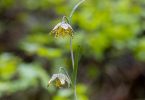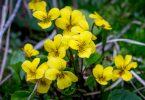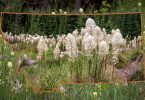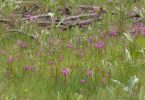Bad Reputation
Both the common and generic names of this group of plants reflect a bad reputation that cattle grazing on these plants would become louse ridden. There is no such impact on cattle but, these plants are hemi-parasitic on any plant growing in proximity. Piehl (1963) found 80 species of 35 families impacted by root parasitism.
Interesting Biology
However, they are not a bane to human beings; their biology is a source of natural metabolites. Plant parts with these chemicals have been used extensively as traditional medicines in the far East (Reeza et al 2019). No wonder, China has about 352 species (Wikipedia). The Plant List has a working list of 568 accepted species worldwide for this genus.
Flower Shapes
Most of the plants associated with mountain habitats of poorly drained soils. This is true in Montana; Lesica (2012) identifies nine species within state boundaries. Brandenburg (2010) summarizes the flower shapes of the 35 native species of North America: typically two-lipped with upper lip hood-like and bottom lip three-lobed. As such, this structural arrangement makes for imaginary configurations, much like what one does watching clouds. The show below is a little “botanical cloud watching”.
Images
Four of the seven Montana species included in the slideshow below. Enjoy.






